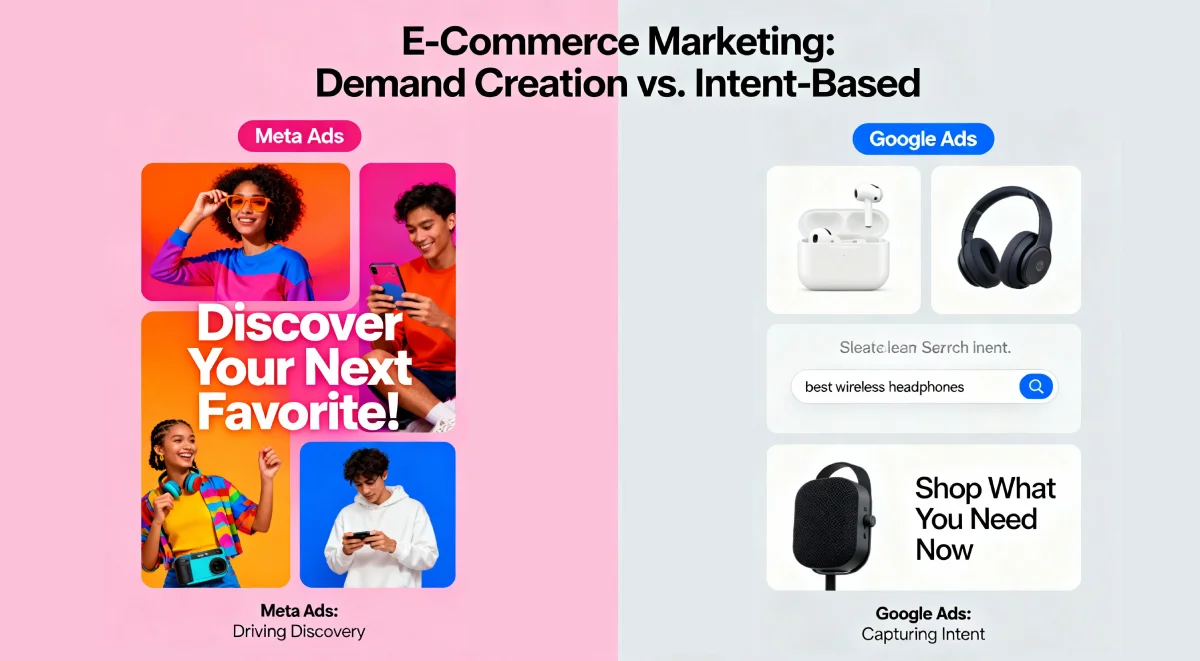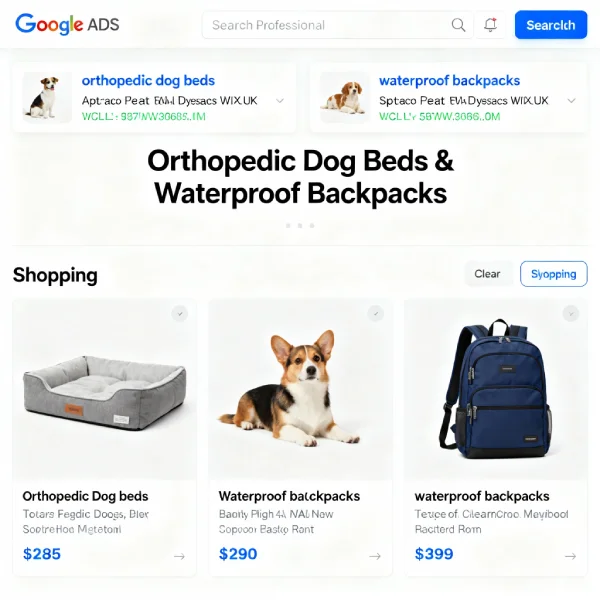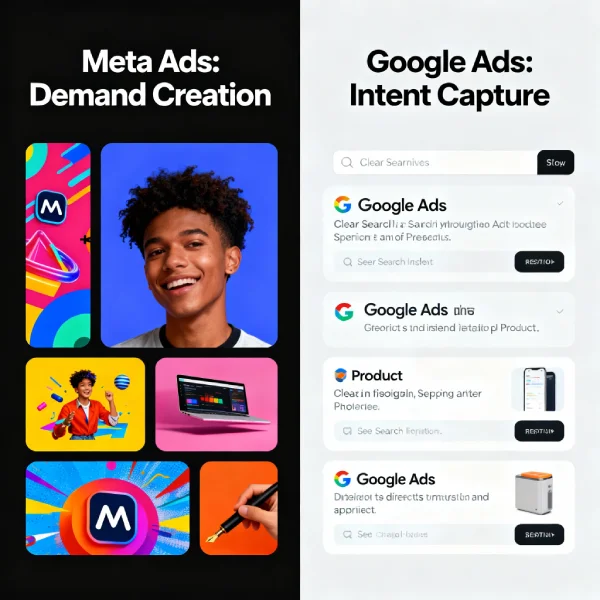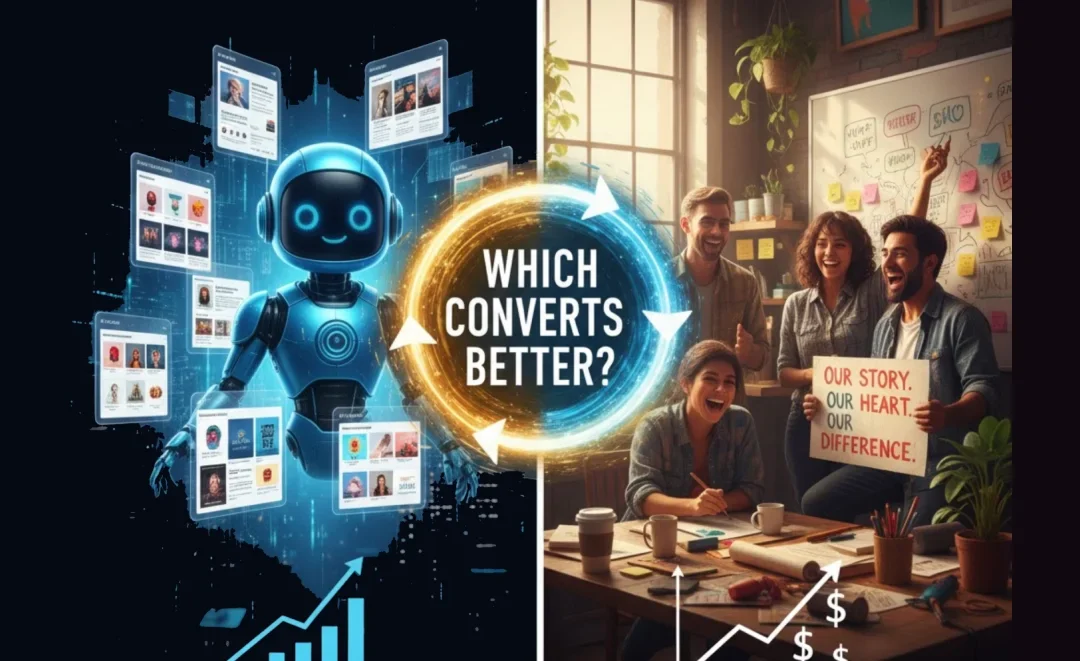Meta Ads vs. Google Ads: A Proven Strategy for E-Commerce Success at Every Stage

Table Of Content
About the Author

Rakesh Raula
Marketing Consultant | Digital Transformation
Rakesh blends analytical thinking with emotional intelligence—crafting campaigns that connect, convert, and leave a lasting impact. Whether it’s mentoring young marketers, collaborating with startups, or consulting large enterprises, he approaches every challenge with humility, curiosity, and an unshakable belief in the power of ideas.
Choosing between Meta Ads (Facebook and Instagram) and Google Ads for your e-commerce store can be the difference between scaling profitably or wasting thousands of dollars. Both platforms serve unique purposes and excel at different stages of your business growth. Understanding when and how to use each can accelerate your profitability, no matter where your store currently stands. Let’s break down the essentials.
Meta Ads: The Demand Creators
Meta Ads function on an interruption-based marketing model. Users are scrolling through their feeds without actively searching for products, so your ad’s job is to interrupt this scroll with content that feels natural, engaging, or entertaining.

-
Best for: Launching new products, building brand awareness, testing creative ideas.
-
Use cases: Show your product in a fun or emotional story to evoke impulse buys.
-
Creative focus: Ads must stop the scroll immediately through bold visuals, curiosity, or emotional resonance.
-
Audience targeting: Reach new users who haven’t heard of your brand.
-
Example: A self-cleaning dog brush ad starts with a messy golden retriever brushing scene, then transitions to a clean-brush demo solving the mess problem instantly.
-
Key tips:
-
If your ad looks too “ad-like,” people skip it.
-
Use sharp, engaging hooks that quickly show the problem and solution.
-
Gather creative insights to improve your messaging for other platforms.
-
Google Ads: The Intent Catchers
Google Ads operate on intent-based marketing where users actively search for specific solutions. Your ads target these intent-driven queries, matching people’s needs exactly when they are ready to buy.

-
Best for: Products that solve a clear problem or meet strong desires, scaling after product-market fit.
-
Ad types:
-
Search Ads (text-based, appear on search queries)
-
Shopping Ads (show image, price, and store info)
-
Performance Max campaigns (automated ads across Google properties like YouTube and Gmail)
-
-
Use cases: Capture high-intent customers searching for terms like “best orthopedic dog bed” or “waterproof laptop backpack.”
-
Pro tip: If buyers are actively searching, prioritize Google Ads to capture demand before competitors.
How to Combine Meta and Google Ads for Growth
Successful e-commerce marketing isn’t about choosing one platform over the other—it’s about using them together strategically throughout your customer journey.

-
Early stage / New product: Use Meta Ads to create awareness, craft messaging, test audiences. Build demand by showing your product in creative ways.
-
When demand grows: Transition to Google Ads to capture people searching for your product or category. Leverage search intent to close sales.
-
Retargeting:
-
Meta retargeting with user-generated content, testimonials, and urgency triggers.
-
Google’s Performance Max retargeting across search, YouTube, Gmail, and display networks.
-
-
Data synergy: Use insights from Meta testing (best visuals, headlines) to improve Google Ads copy and product titles, ensuring better conversions.
Store Stage Roadmap
-
Just starting out: Focus on Meta to build brand awareness and test product messaging quickly.
-
Product-market fit found: Deploy Google Ads to capture active search traffic and scale profitably.
-
Established store: Combine campaigns on both platforms, running retargeting and optimizing using cross-platform data.
Thaught: Don’t get stuck chasing the “best platform.” Nail your product messaging and optimize your customer funnel first. Then grow your ads strategically on both Meta and Google. This dual approach builds a reliable, scalable growth engine that leverages the unique strengths of both platforms.
IT Services
Web Architects
CRM/ERP Development
Marketing Services
Conceptual Marketing
Opportunities
Market Research
Competitive Analysis
Business Support
Budget Management
Affiliations



